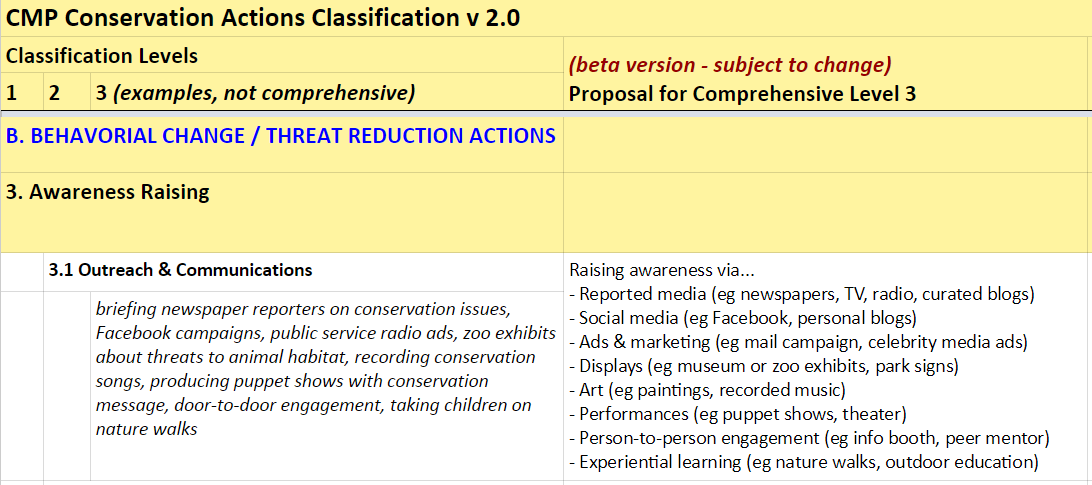Story from Nick Salafsky, Foundations of Success
The fundamental basis of any science is having a common lexicon to describe the systems you are working with. In 2007, the Conservation Measures Partnership released the Direct Threat and Conservation Actions Classifications. These classifications have been adopted by organizations around the world. Over the past couple years, a working group has been reviewing the way threats and conservation actions are classified to take into account new information and thinking. The group just released Version 2.0 of the classifications.
The Direct Threats Classification has been remarkably robust and has undergone only minor revisions. Key changes include:
- NEW Level 2 Threats:
- 4 Removing/Reducing Human Maintenance
- 4 Pathogens & Microbes
- Reworking of Climate Change Threats to reflect our new understanding of the impacts of climate change and severe weather events on conservation.
The Conservation Actions Classification has undergone much more substantial revisions. Key changes include:
- NEW Level 0, the highest level of hierarchy groups actions into:
- Target Restoration/Stress Reduction Actions
- Behavioral Change/Threat Reduction Actions
- Enabling Condition Actions
- NEW Action Types:
- 3 Land/Water Use Zoning & Designation
- Research & Monitoring
- 1 Internal Organizational Management & Administration
- Comprehensive Level 3 (Beta) offers a more detailed breakdown of actions at the “species” level (this new level is likely to undergo substantial further revision)
- A NEW catalog of results chains that show the theory of change behind each action is now available in the Conservation Actions and Measures Library.
The table below shows the old Level 3 examples and the new comprehensive Level 3.
The diagram below shows the new Level 0 Actions.


